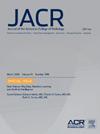保护放射数据和设备免受网络安全威胁:ACR和医学成像信息学学会联合白皮书。
IF 5.1
3区 医学
Q1 RADIOLOGY, NUCLEAR MEDICINE & MEDICAL IMAGING
引用次数: 0
摘要
现代放射学完全依赖于数字成像系统。医疗记录会引起网络罪犯的注意。现场和基于云的信息系统,包括人工智能,可以提高效率,但也会产生弱点。医疗成像系统必须保护患者身份、控制访问、保护设备,并与患者、支付方和计费合作伙伴进行协调。该白皮书由ACR和医学成像信息学学会(Society for Imaging Informatics in Medicine)批准,概述了有系统地加强医学成像管道、培训一线护理人员、制定事件响应和恢复策略以应对数据泄露和禁用勒索软件攻击的步骤。此外,建立一种安全的成像文化包括进行日常模拟和积极参与领导。综上所述,这些多学科干预措施可以最大限度地减少网络安全事件的临床影响和操作影响,从而在日益互联的成像工作流程中保持患者的信任。本文章由计算机程序翻译,如有差异,请以英文原文为准。
Protecting Radiology Data and Devices Against Cybersecurity Threats: A Joint White Paper of the ACR and Society for Imaging Informatics in Medicine1
Modern radiology relies entirely on digital imaging systems. Health care records draw cybercriminals’ attention. On-site and cloud-based informatics systems, including artificial intelligence, can boost efficiency but also create weak points. Medical imaging systems must safeguard patient identities, control access, secure devices, and coordinate with patients, payers, and billing partners. Endorsed by the ACR and the Society for Imaging Informatics in Medicine, this white paper outlines steps to fortify the medical imaging pipeline methodically, train caregivers on the frontline, and develop incident response and recovery strategies for data breaches and disabling ransomware attacks. Additionally, building a culture of safety in imaging involves conducting routine simulations and actively engaging leadership. Taken together, these multidisciplinary interventions can minimize the clinical impact and operational implications of cybersecurity events, thereby maintaining patient trust in an increasingly interconnected imaging workflow.
求助全文
通过发布文献求助,成功后即可免费获取论文全文。
去求助
来源期刊

Journal of the American College of Radiology
RADIOLOGY, NUCLEAR MEDICINE & MEDICAL IMAGING-
CiteScore
6.30
自引率
8.90%
发文量
312
审稿时长
34 days
期刊介绍:
The official journal of the American College of Radiology, JACR informs its readers of timely, pertinent, and important topics affecting the practice of diagnostic radiologists, interventional radiologists, medical physicists, and radiation oncologists. In so doing, JACR improves their practices and helps optimize their role in the health care system. By providing a forum for informative, well-written articles on health policy, clinical practice, practice management, data science, and education, JACR engages readers in a dialogue that ultimately benefits patient care.
 求助内容:
求助内容: 应助结果提醒方式:
应助结果提醒方式:


